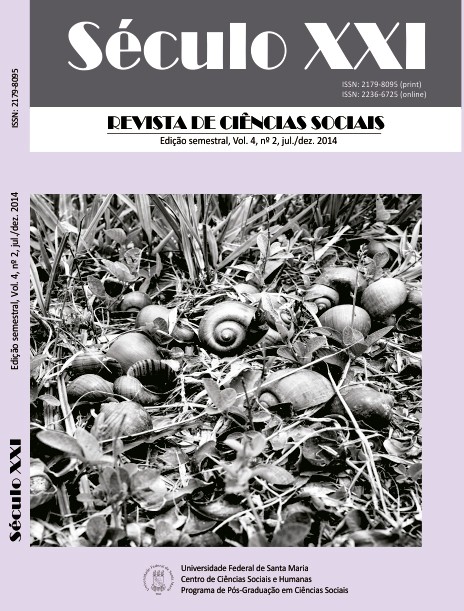Subject-making methods in AIDS policies: managing youth living with HIV/AIDS
DOI:
https://doi.org/10.5902/2236672517039Keywords:
AIDS, policy, youth, management, government technologies.Abstract
This article is based on doctoral research that discusses a set of technologies in the Foucauldian sense of the term, geared towards the (con)formation of Subjects in the broadest context of the production of youth living with HIV/AIDS as “new characters” in AIDS. Based on anthropological methods, the ethnographical approach consisted primarily of making systematic observations of workshops of an educational nature conducted as part of a social project designed to train young people as protagonists. Emphasis is given to a drama workshop, based on which a discussion is presented of the technologies and strategies employed in the modeling of youth living with HIV/AIDS as moral political subjects, part of the modus operandi of AIDS policies in Brazil. The notion of “modeling” subjects derives from the fact that this is a project that brings forth model-subjects, examples. This modeling does not come about as the result of the crude, abrupt imposition of values, habits and behaviors, but rather through the ongoing, gentle polishing of the subjects and the way they understand themselves and their status as youth living with HIV/AIDS.Downloads
Downloads
Published
How to Cite
Issue
Section
License
Authors who publish in this journal agree with the following terms:
1. Authors keep the copyrights and allow the journal the right of first publishing, having the paper simultaneously licensed by Creative Commons Attribution License that allows the sharing of the article – copyright recognized - and first publishing in this journal.
2. The journal is allowed to require the copyrights transfer, allowing the article to be used under noncommercial purposes, including the right to send the paper to Free Access or Paid databanks, not assuming the obligation to pass on the value charged from users to the authors.
3. Authors are allowed to take additional contracts separately for nonexclusive distribution of the paper’s version published in this journal (e.g. publishing in institutional repository or as book chapter), recognizing the copyright and first publishing in this journal.







